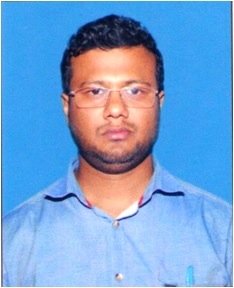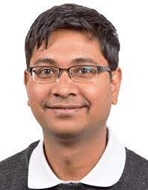Dr. Akhtar Hussain has been serving as an Assistant Professor in the Postgraduate Department of Chemistry, Handique Girls’ College, Guwahati, since May 2012. He received his M.Sc. degree in Chemistry with specialization in Inorganic Chemistry from Gauhati University, Guwahati in 2006. He obtained his Ph.D. degree from the Indian Institute of Science (IISc), Bengaluru in 2012 under the supervision of Prof. A.R. Chakravarty in the Department of Inorganic and Physical Chemistry. The topic of his doctoral study was “Studies on Lanthanide Complexes showing Photo-activated DNA Cleavage and Anticancer Activity”. Dr. Hussain qualified for the CSIR-UGC-JRF examination in 2005. Before joining Handique Girls’ College, he spent six months as a Research Associate at IISc, Bengaluru.
Dr. Hussain is currently working in the field of medicinal inorganic chemistry to design and develop novel transition metal-based drugs for their applications as potential chemotherapeutic agents. His doctoral work was concerned with the design, synthesis and characterization of coordination complexes of lanthanides having non-porphyrinic photosensitizer ligands as potential cytotoxic agents for their applications in cancer photodynamic therapy (PDT). His current research interest is focused on the design and development of coordination complexes of first-row bioessential transition metal ions such as iron, cobalt, nickel, and copper by using naturally occurring photoactive organic chelators having intrinsic emission properties as theranostic (therapy + diagnostic imaging) agents for cancer chemotherapy applications. The drawbacks of the platinum-based clinical chemotherapy drugs and porphyrin-based PDT drug Photofrin have prompted medicinal chemists to look for the first-row transitions metal complexes of non-porphyrinic ligands as potential alternatives. He is particularly interested in developing mitochondria-targeted metal complex photosensitizers as photocytotoxic agents for cancer PDT applications. While the photosensitizing property of a metal complex photosensitizer renders it phototoxic to cancer cells, its emission property allows one to study its subcellular localization inside cancer cells by using confocal microscopy. He has developed several iron and cobalt complexes that show remarkable cell imaging ability and in vitro phototoxicity against cancer cells. These complexes are amenable to further in vivo evaluations using experimental animal models. He is presently working on a funded major research project of the Department of Biotechnology (DBT) to develop tumor-targeted iron and cobalt coordination compounds as potential cytotoxic agents. He has received four major research grants from DBT (GoI).
He is actively collaborating with researchers from prestigious research institutions such as IISc (Bengaluru), Indian Institute of Chemical Technology (IICT, Hyderabad), Delhi University, Tezpur University, and Gauhati University in the various interdisciplinary aspects of his research. Dr. Hussain has published 30 original research articles in international peer-reviewed (SCI-indexed) journals. He is serving as a reviewer for several prestigious chemistry journals published by reputed publishers such as the Royal Society of Chemistry (RSC), American Chemical Society, Elsevier, and Wiley. He has been recognized as an Outstanding Reviewer of the Journal Chemical Communications published by RSC, UK, London for the year 2020. He is also recognized as one amongst the top 5% of the highly cited authors in 2019 by the RSC, UK, London. He is the recipient of the Unit of Excellence Award of the DBT (GoI). He also received a travel award from DBT to attend a symposium of the Society of Biological Inorganic Chemistry held in Taiwan.
Details of research students under the supervision of Dr. A. Hussain and their areas of research:
Banashree Deka – Synthesis, characterization, and cytotoxicity evaluations of novel bioessential transition metal complexes.
Jyotirmoy Dutta – Development of first-row transition metal complexes of bioactive naturally occurring ligands as antibacterial and theranostic anticancer agents.
Rakesh Patowary – Photoactive first-row transition metal complexes as next-generation cancer phototheranostic agents.
Research group of Dr. A. Hussain





